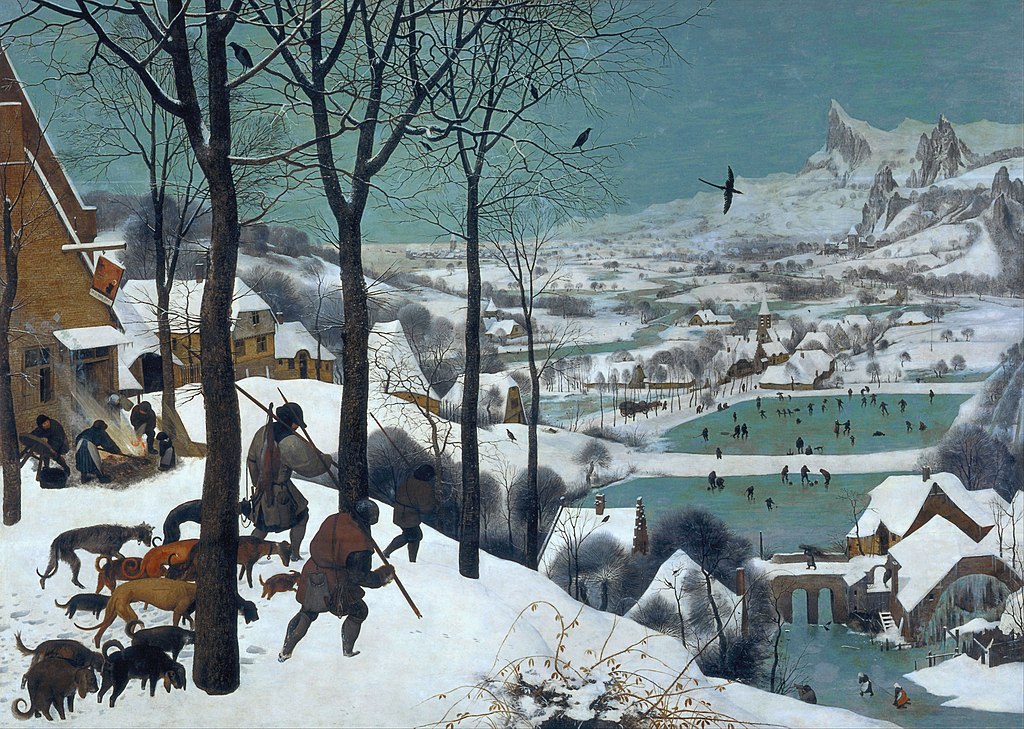More Thoughts from Dagomar Degroot and Chelsea Teale
On January 24, 2023, NAHC presented Dr. Chelsea Teale in conversation with Dr. Dagomar Degroot for a fascinating discussion on The Little Ice Age in the Dutch North Atlantic. With more than 750 people registered for the program, many audience questions had to be left on the table. Our speakers were kind enough to come back with answers to a few more queries.
Dagomar Degroot, answered questions from two young environmentalists and one anonymous Attendee.

Question: I was fascinated by [Dagomar’s] comment that historians used to think of the natural environment as a ‘backdrop’ to history until quite recently. Can he explain more about how and when the field of history started to pay attention to climate and environment as an influence on human activity?
Degroot: Researchers formulated our modern understanding of climate change in the late nineteenth century, and soon thereafter researchers attempted to discern how climate had changed, which in turn permitted the first studies that linked climate change to the rise and fall of empires. Although some of this work was published in the period’s major historical journals, historians largely ignored “climate history” until the 1960s, when one of the century’s most esteemed historians – Emmanuel le Roy Ladurie – considered what elements of European history could be firmly linked to the Little Ice Age. Climate history took on its modern form in the 1970s and ‘80’s, but remained an exceptionally small corner of the historical profession until the recent rise in concern about global warming. Using newly comprehensive and precise understandings of past climate change – developed by paleoclimatologists – more and more historians now attempt to discern how climate influenced history.
Question: When did researchers begin to look at tree rings in relationship to climate change?
Degroot: Leonardo Da Vinci first speculated that tree rings might be linked both to the age of trees and the weather they experienced. By the closing decades of the nineteenth century, scholars were beginning to experiment with the idea that the width of tree rings could register annual precipitation or temperature. It was only then that a consensus started to emerge in America that many tree species added a single ring during every growing season. In 1901, astronomer Andrew Ellicott Douglass travelled across Arizona and came to realize that altitude, and in turn precipitation, dictated tree growth across the state. Since solar radiation dictated evaporation and in turn precipitation across Arizona, Douglass figured the width of local tree rings should provide a record of fluctuations in solar activity. It was this insight that encouraged Douglass to develop the science of dendrochronology: the systematic study of human and environmental change as recorded in the rings of trees.
Teale: The study of past environments can benefit society today by providing cautionary tales and stories of resilience. But how can understanding contemporary environments illuminate the past? Can we identify modern analogs for historical circumstances? For example, in New Netherland, there were multiple significant spring freshets* in the Hudson Valley (until the Conklingville Dam was completed in 1930, floods were common). If we can determine rainfall, snowpack, temperatures, and other factors leading to floods in the nineteenth and early twentieth centuries, maybe we can attribute possible causes to some seventeenth-century floods. That would expand our perspective on the weather conditions people experienced in what became New York State.
Understanding the impacts of drought is another way to learn about the past from the present. Today’s drought severity index – calculated from modern instrumental data – can be compared to the same index calculated from seventeenth-century tree ring records. For example, the 1960s Hudson River Watershed drought was the most severe of the past 500 years. Can the instrumental and historical records from the twentieth-century shed light on the second-most severe drought in the 1660s? It is common to use the past to extrapolate to the present and future; the reverse is also possible.
Question: We think of the Little Ice Age as a period of extended, constant, extreme cold. Your research shows how the cold was intermittent. Is “Little Ice Age” a misnomer and a phenomenon that did not actually exist. Should the term be retired?”
Degroot: Yes, the “Little Ice Age” is a misnomer. It was no “ice age” as the term is used today in popular discourse; in no way was it comparable to the glacial maxima that our ancestors lived through. Yet it was also far from “little”; after all, it lasted with interruptions from (arguably) the fourteenth through the nineteenth centuries. The term nevertheless should not be retired; temperatures were on average cooler for most of these centuries, and the term provides an accessible shorthand for the climate of the period. Yet when used, it should be clearly and accurately defined – which it isn’t in many popular histories.
Dr. Chelsea Teale is a lecturer in the Department of Geography, Environment, and Spatial Analysis at Cal Poly Humboldt; Dr. Dagomar Degroot is an associate professor of Environmental History at Georgetown University.
Suggested readings
An Environmental and Cultural History of winter in the Early American Northeast. Wickman, Thomas M. Snowshoe, Country:Cambridge University Press, 2018. A book by a leading historian that considers how both English settlers and Wabanaki communities coped with the Little Ice Age.
The Little Ice Age and Europe’s encounter with North America. White, Sam. A Cold Welcome: Harvard University Press, 2017.A book by one of the world’s foremost authorities on the Little Ice Age that focuses on the settler experience of climate and climate change in North America.
The Frigid Golden Age: Climate Change, The Little Ice Age, and the Dutch Republic, 1560–1720. Cambridge University Press, 2018. Dagomar Degroot
Degroot, Dagomar, Kevin J. Anchukaitis, Jessica E. Tierney, Felix Riede, Andrea Manica, Emma Moesswilde, and Nicolas Gauthier. “The history of climate and society: a review of the influence of climate change on the human past.” Environmental Research Letters 17, no. 10 (2022): 103001. 36 pages.
The History of Climate and Society: a review of the influence of climate change on the human past
Our recent open-access article that summarizes the global study of human responses to preindustrial climate changes, as practiced in all its major disciplines.
We hope you’ve enjoyed our articles and information. If you would like to contribute to help us promote and spread the history of the early New York, please click and discover more about our programs, what we offer and ways you can help.
We hope you’ve enjoyed our articles and information. If you would like to contribute to help us promote and spread the history of the early New York, please discover more about our programs, what we offer and ways you can help.




